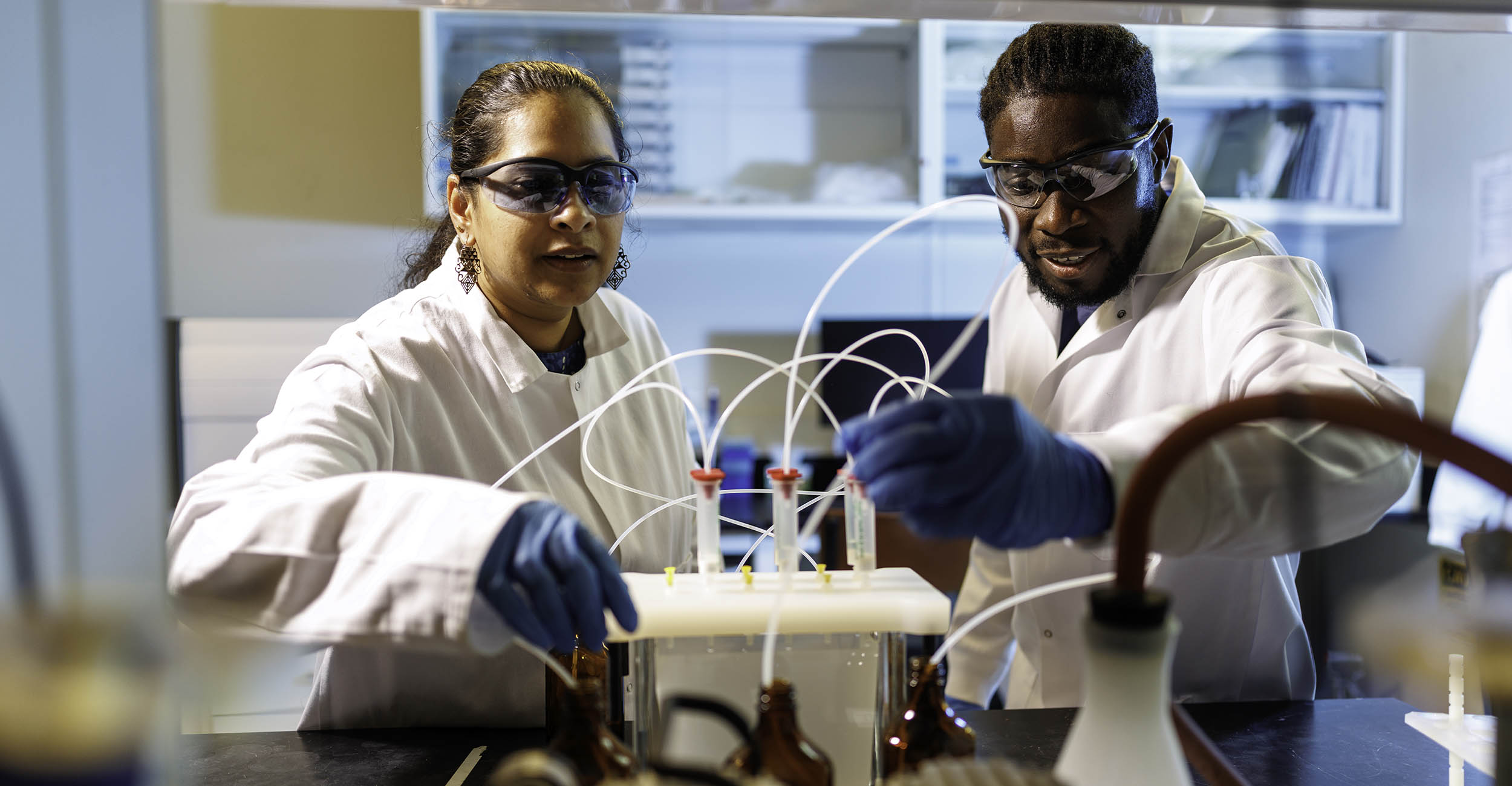
OSU awarded $2 million for a multidisciplinary project to create water and energy efficiency for farmers
Wednesday, October 22, 2025
Media Contact: Alisa Gore | Office of Communications & Marketing, OSU Agriculture | 405-744-7115 | alisa.gore@okstate.edu
Three land-grant universities are exploring whether producing energy from animal waste and cleaning wastewater can be achieved in one technology system.
Three separate types of technologies already exist to:
- generate energy by producing methane from animal waste
- clean wastewater
- recover phosphate from animal waste
“They have all existed in their own silos, and scientists are always working to make these systems more efficient and less harmful to the environment,” said Kiranmayi Mangalgiri, assistant professor of water quality in the Oklahoma State University Department of Biosystems and Agricultural Engineering.
Can scientists accomplish this by combining the technologies together? This is the question being asked by a team of researchers from OSU, Kansas State University and the University of Nebraska-Lincoln. The project recently received a combined $6 million from the National Science Foundation.
“We are trying to develop one system for agricultural producers to handle their animal waste while also saving energy and water,” Mangalgiri said. “We also want the process to have little to no impact on the environment and create valuable chemicals like hydrogen peroxide.”
The goal is to build a system that uses the carbon from animal waste to create energy. Part of that energy will be used to clean wastewater, so it can be used again as drinking water and crop water. That would mean farmers would use less water from the Ogallala Aquifer.
Prathap Parameswaran, a professor and civil engineer at KSU, has developed a technology for creating methane using microorganisms. The researchers are trying to build on this system to learn:
- how advanced wastewater treatment technology can be combined with existing energy recovery systems,
- how to make the combined system as efficient and cost-effective as possible and avoid negative impacts to nature, and
- how to make the system adaptable for producers in the Great Plains region.
“This project is different because it is collaborative in every way,” Mangalgiri said. “Instead of one university working on one piece and another university working on another piece, all three universities are working on all the pieces, and they are doing it together.”
Mangalgiri is working on the wastewater treatment side of the project. Mark Krzmarzick, OSU professor and interim head of the OSU School of Civil & Environmental Engineering, is studying how much antibiotic residue is left in treated water and identifying microorganisms that could enhance energy recovery.
“Antibiotic resistance happens because bacteria have specific genes that allow them to tolerate chemicals like antibiotics,” Krzmarzick said. “Understanding how we spread or destroy these genes in our wastewater systems helps protect the health of both agricultural workers and animals.”
Douglas Hamilton, an OSU associate professor in biosystems and agricultural engineering, is collaborating with KSU colleagues to improve the energy recovery system that uses microorganisms to purify water. Michael Long, OSU professor of sociology, is conducting surveys to understand how farmers will adopt the new technology.
“We need to know if producers will view the technology as being worth the investment and if they will reuse the cleaned water for livestock, crops, and the food they eat?” Long said. “We will learn where the technology will be adopted and make a strong, positive impact.”
This material is based upon work supported by the National Science Foundation EPSCoR’s Research Infrastructure Improvement under award number OIA-2521392 for $6 million.
